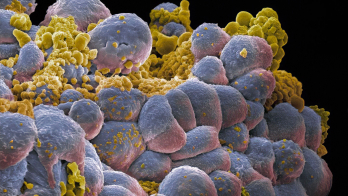
Urban particle pollution ranks fifth in the risk factors for mortality worldwide, and is a growing problem in many built-up areas. In a result that could help shape policies for reducing such pollution, the CLOUD collaboration at CERN has uncovered a new mechanism that drives winter smog episodes in cities.
Winter urban smog episodes occur when new particles form in polluted air trapped below a temperature inversion: warm air above the inversion inhibits convection, causing pollution to build up near the ground. However, how additional aerosol particles form and grow in this highly polluted air has puzzled researchers because they should be rapidly lost through scavenging by pre-existing aerosol particles. CLOUD, which uses an ultraclean cloud chamber situated in a beamline at CERN’s Proton Synchrotron to study the formation of aerosol particles and their effect on clouds and climate, has found that ammonia and nitric acid can provide the answer.
Deriving in cities mainly from vehicle emissions, ammonia and nitric acid were previously thought to play a passive role in particle formation, simply exchanging with ammonium nitrate in the particles. However, the new CLOUD study finds that small inhomogeneities in the concentrations of ammonia and nitric acid can drive the growth rates of newly formed particles up to more than 100 times faster than seen before, but only in short spurts that have previously escaped detection. These ultrafast growth rates are sufficient to rapidly transform the newly formed particles to larger sizes, where they are less prone to being lost through scavenging, leading to a dense smog
episode with a high number of particles.
“Although the emission of nitrogen oxides is regulated, ammonia emissions are not and may even be increasing with the latest catalytic converters used in gasoline and diesel vehicles,” explains CLOUD spokesperson Jasper Kirkby. “Our study shows that regulating ammonia emissions from vehicles could contribute to reducing urban smog.”
- CLOUD’s science is described in depth in our interview with Jasper Kirkby.
Further reading
CLOUD Collab. 2020 Nature 581 184.








